Guoqing Zhou
Bright-NeRF:Brightening Neural Radiance Field with Color Restoration from Low-light Raw Images
Dec 19, 2024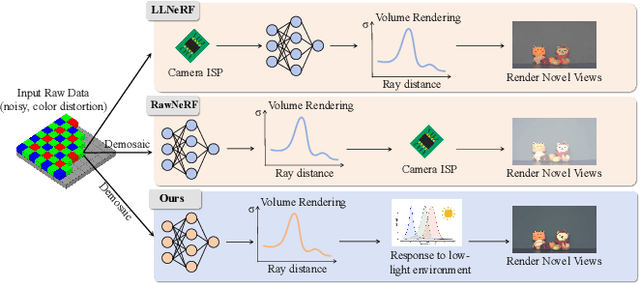



Abstract:Neural Radiance Fields (NeRFs) have demonstrated prominent performance in novel view synthesis. However, their input heavily relies on image acquisition under normal light conditions, making it challenging to learn accurate scene representation in low-light environments where images typically exhibit significant noise and severe color distortion. To address these challenges, we propose a novel approach, Bright-NeRF, which learns enhanced and high-quality radiance fields from multi-view low-light raw images in an unsupervised manner. Our method simultaneously achieves color restoration, denoising, and enhanced novel view synthesis. Specifically, we leverage a physically-inspired model of the sensor's response to illumination and introduce a chromatic adaptation loss to constrain the learning of response, enabling consistent color perception of objects regardless of lighting conditions. We further utilize the raw data's properties to expose the scene's intensity automatically. Additionally, we have collected a multi-view low-light raw image dataset to advance research in this field. Experimental results demonstrate that our proposed method significantly outperforms existing 2D and 3D approaches. Our code and dataset will be made publicly available.
BioNeMo Framework: a modular, high-performance library for AI model development in drug discovery
Nov 15, 2024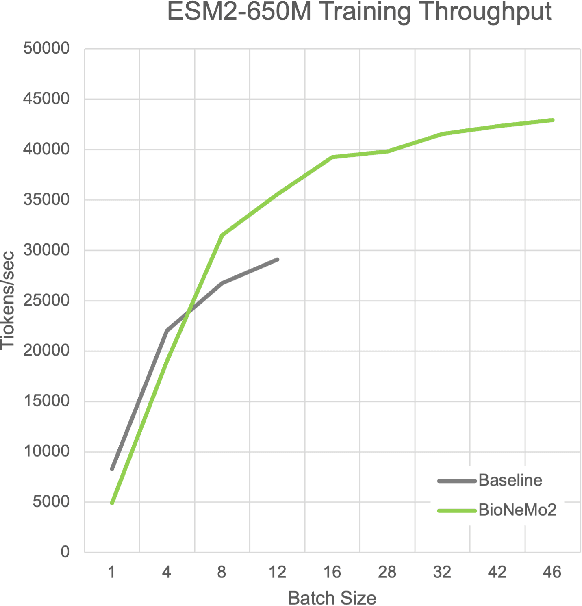
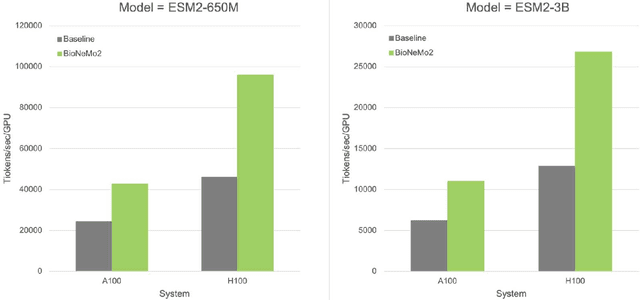
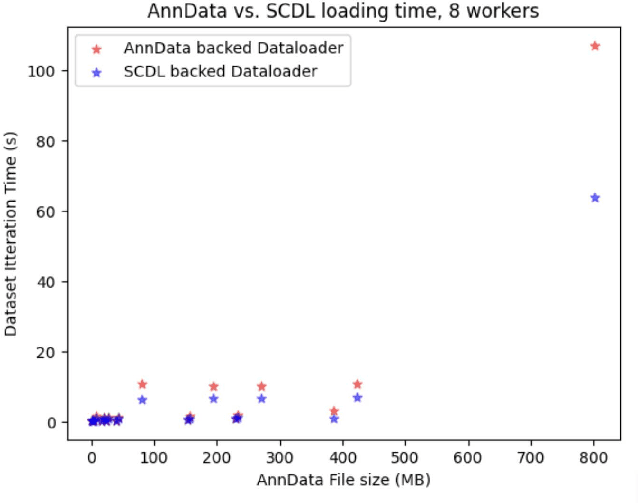
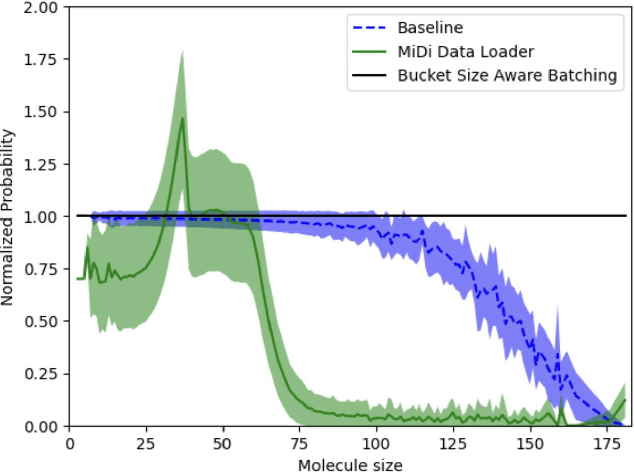
Abstract:Artificial Intelligence models encoding biology and chemistry are opening new routes to high-throughput and high-quality in-silico drug development. However, their training increasingly relies on computational scale, with recent protein language models (pLM) training on hundreds of graphical processing units (GPUs). We introduce the BioNeMo Framework to facilitate the training of computational biology and chemistry AI models across hundreds of GPUs. Its modular design allows the integration of individual components, such as data loaders, into existing workflows and is open to community contributions. We detail technical features of the BioNeMo Framework through use cases such as pLM pre-training and fine-tuning. On 256 NVIDIA A100s, BioNeMo Framework trains a three billion parameter BERT-based pLM on over one trillion tokens in 4.2 days. The BioNeMo Framework is open-source and free for everyone to use.
Epipolar Focus Spectrum: A Novel Light Field Representation and Application in Dense-view Reconstruction
Apr 01, 2022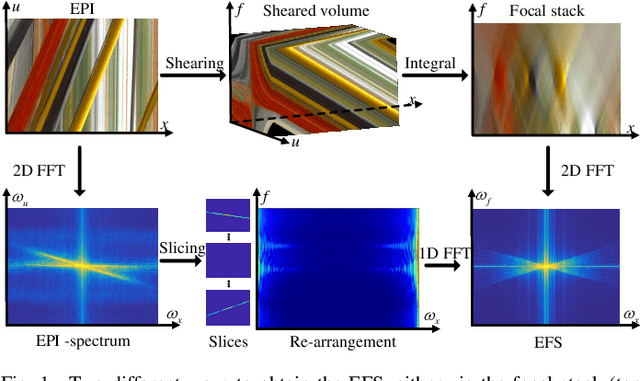
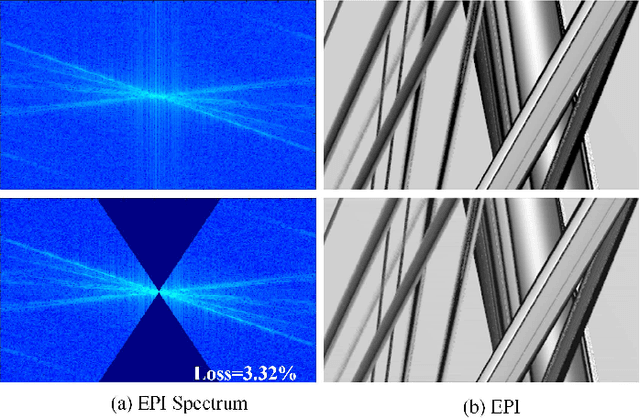
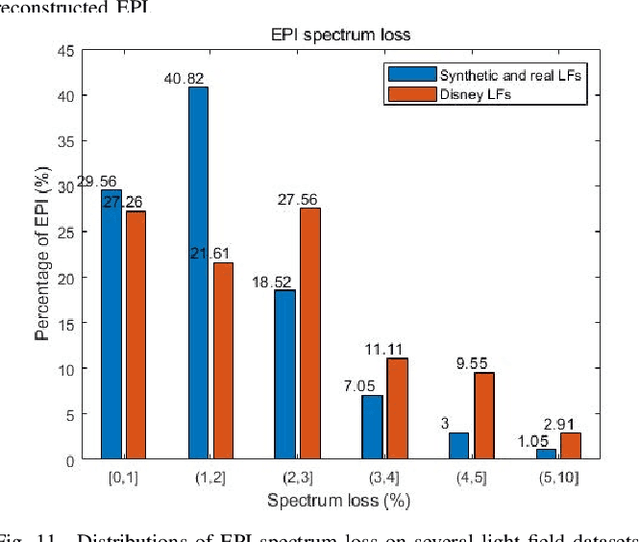
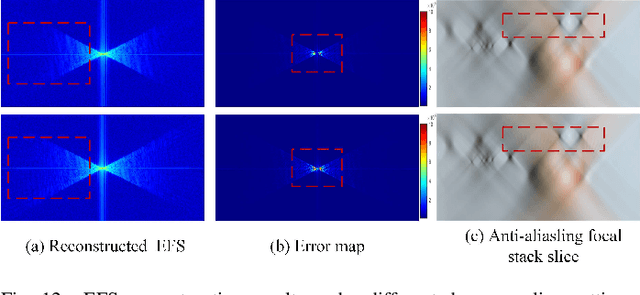
Abstract:Existing light field representations, such as epipolar plane image (EPI) and sub-aperture images, do not consider the structural characteristics across the views, so they usually require additional disparity and spatial structure cues for follow-up tasks. Besides, they have difficulties dealing with occlusions or larger disparity scenes. To this end, this paper proposes a novel Epipolar Focus Spectrum (EFS) representation by rearranging the EPI spectrum. Different from the classical EPI representation where an EPI line corresponds to a specific depth, there is a one-to-one mapping from the EFS line to the view. Accordingly, compared to a sparsely-sampled light field, a densely-sampled one with the same field of view (FoV) leads to a more compact distribution of such linear structures in the double-cone-shaped region with the identical opening angle in its corresponding EFS. Hence the EFS representation is invariant to the scene depth. To demonstrate its effectiveness, we develop a trainable EFS-based pipeline for light field reconstruction, where a dense light field can be reconstructed by compensating the "missing EFS lines" given a sparse light field, yielding promising results with cross-view consistency, especially in the presence of severe occlusion and large disparity. Experimental results on both synthetic and real-world datasets demonstrate the validity and superiority of the proposed method over SOTA methods.
Deep Anti-aliasing of Whole Focal Stack Using its Slice Spectrum
Jan 23, 2021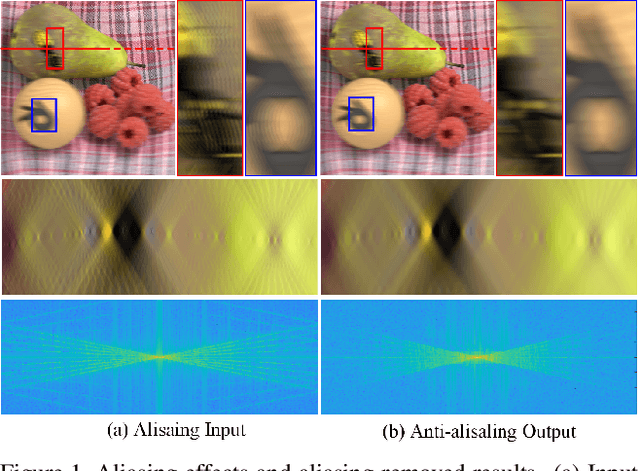
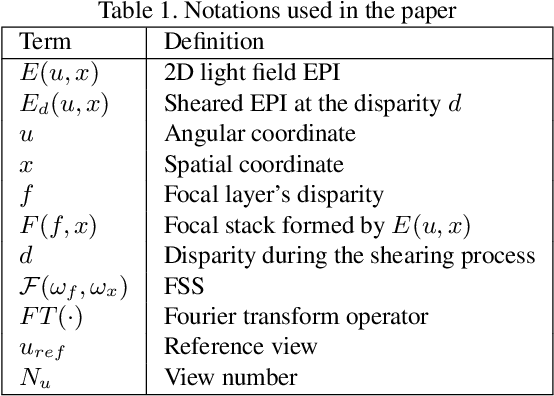
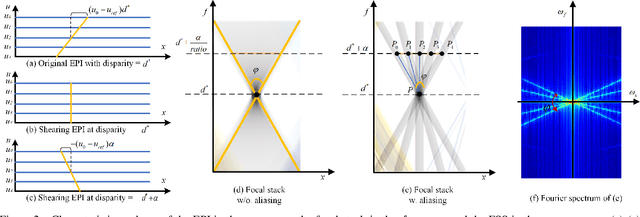
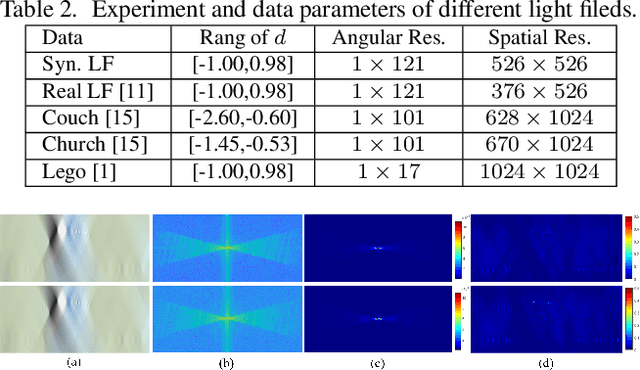
Abstract:The paper aims at removing the aliasing effects for the whole focal stack generated from a sparse 3D light field, while keeping the consistency across all the focal layers.We first explore the structural characteristics embedded in the focal stack slice and its corresponding frequency-domain representation, i.e., the focal stack spectrum (FSS). We also observe that the energy distribution of FSS always locates within the same triangular area under different angular sampling rates, additionally the continuity of point spread function (PSF) is intrinsically maintained in the FSS. Based on these two findings, we propose a learning-based FSS reconstruction approach for one-time aliasing removing over the whole focal stack. What's more, a novel conjugate-symmetric loss function is proposed for the optimization. Compared to previous works, our method avoids an explicit depth estimation, and can handle challenging large-disparity scenarios. Experimental results on both synthetic and real light field datasets show the superiority of the proposed approach for different scenes and various angular sampling rates.
Dense Light Field Reconstruction From Sparse Sampling Using Residual Network
Aug 11, 2018



Abstract:A light field records numerous light rays from a real-world scene. However, capturing a dense light field by existing devices is a time-consuming process. Besides, reconstructing a large amount of light rays equivalent to multiple light fields using sparse sampling arises a severe challenge for existing methods. In this paper, we present a learning based method to reconstruct multiple novel light fields between two mutually independent light fields. We indicate that light rays distributed in different light fields have the same consistent constraints under a certain condition. The most significant constraint is a depth related correlation between angular and spatial dimensions. Our method avoids working out the error-sensitive constraint by employing a deep neural network. We solve residual values of pixels on epipolar plane image (EPI) to reconstruct novel light fields. Our method is able to reconstruct 2 to 4 novel light fields between two mutually independent input light fields. We also compare our results with those yielded by a number of alternatives elsewhere in the literature, which shows our reconstructed light fields have better structure similarity and occlusion relationship.
 Add to Chrome
Add to Chrome Add to Firefox
Add to Firefox Add to Edge
Add to Edge